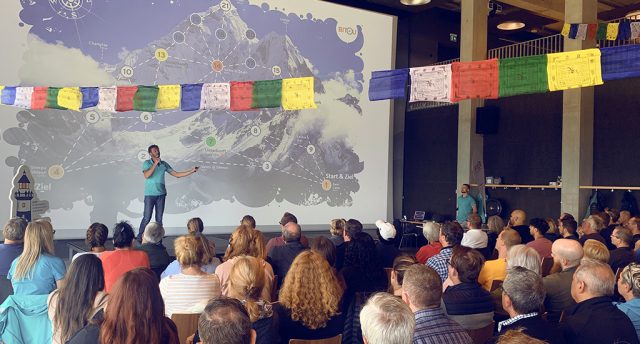Change Management – How we support you with change processes in your company

1. What is change management?
2. Change Management according to John Kotter
3. This is how we support you in change processes
Change management is on everyone’s lips. Not least the Corona pandemic has shown how flexibly companies and teams have to react to sudden changes. The willingness to change is an essential capability of well-functioning and high-performing teams. Agility, flexibility, spontaneity are becoming increasingly important for sustainable team success. In this article you will learn what change management actually is, which model underlies the concept and how we support you and your team in change processes.
1. What is change management?
Change management refers to the methods and procedures that companies use to describe and implement changes in their internal and external processes. This includes preparing and supporting employees, defining the necessary steps for change, and monitoring activities before and after change. But what exactly is involved in the change process and how can change succeed in the company?
Organizational change can be challenging. They often require collaboration at many levels and may involve different independent entities within an organization. Developing a structured approach to change is critical to ensure a beneficial transition and exit.
Effective communication is one of the key success factors for effective change management. Of particular importance: all stakeholders need to understand progress through the various phases and see the results.
2. Change Management according to John Kotter
In order to implement changes such as digital transformation or a smooth transition in mergers and acquisitions, it is important to plan and structure the entire project effectively.
For this purpose, it makes sense to be guided by existing change management models. Among the best-known change models is John Kotter’s 8-phase model. Each phase focuses on the reaction of the employees to the change:
- Increase urgency: Creating a sense of urgency among employees can be the best way to motivate and engage them in the process.
- Build a leadership coalition: identify the right skills and personalities for the team that will drive change in the organization.
- The right vision: Consider not only the strategy, but also the creativity of the employees, their emotions and the goals of the project.
- Communication: Be transparent and communicate regularly with employees about the changes that are being implemented.
- Get things rolling: Get support, remove obstacles and collect constructive feedback.
- Focus on short-term goals: Don’t just focus on the end result. Set small goals and recognize small successes during the process to boost employee morale.
- Integrate change: Make change part of the work culture. Help employees adapt and reward them for the new behaviors.
- Don’t give up: Change doesn’t happen overnight, and obstacles are inevitable. Stay persistent during the change process, no matter how difficult things may seem.
Kotter’s model is easy to follow. Focusing on the employee experience and proper communication in the workplace is one of the reasons why this model is one of the most widely used models for change management in organizations.
3. How we support your team in change processes
The need for change management processes in companies has many reasons: from the implementation of new corporate structures, digitalization, globalization to economic crises. The demands on modern teams have increased extremely in recent years.
With our team development “Planetary Saga“, we offer you a new tool to playfully try out change processes yourself or to make them lively, tangible and entertaining for clients as part of your own consulting services. “Planetary Saga” reproduces a change process in a playful way. It is based on John Kotter’s 8 steps in change management.
The implementation of new processes and structures requires a team culture in which change can be lived, but also openness and a certain degree of curiosity, flexibility and vitality.
This allows our active modules to move their team forward
- You help your team to train common change management situations in a playful way
- You show your team how they can actively participate in the change management process
- You train, the communication style for more effective interaction in the team
- They improve working relationships and communication skills in the team
At the end of our active modules comes the reflection and thus the most valuable part: Together we structure
the learning outcomes, discuss the takeaways of the individual teams, and create sufficient space for the
reflection on your conflict resolution skills.



